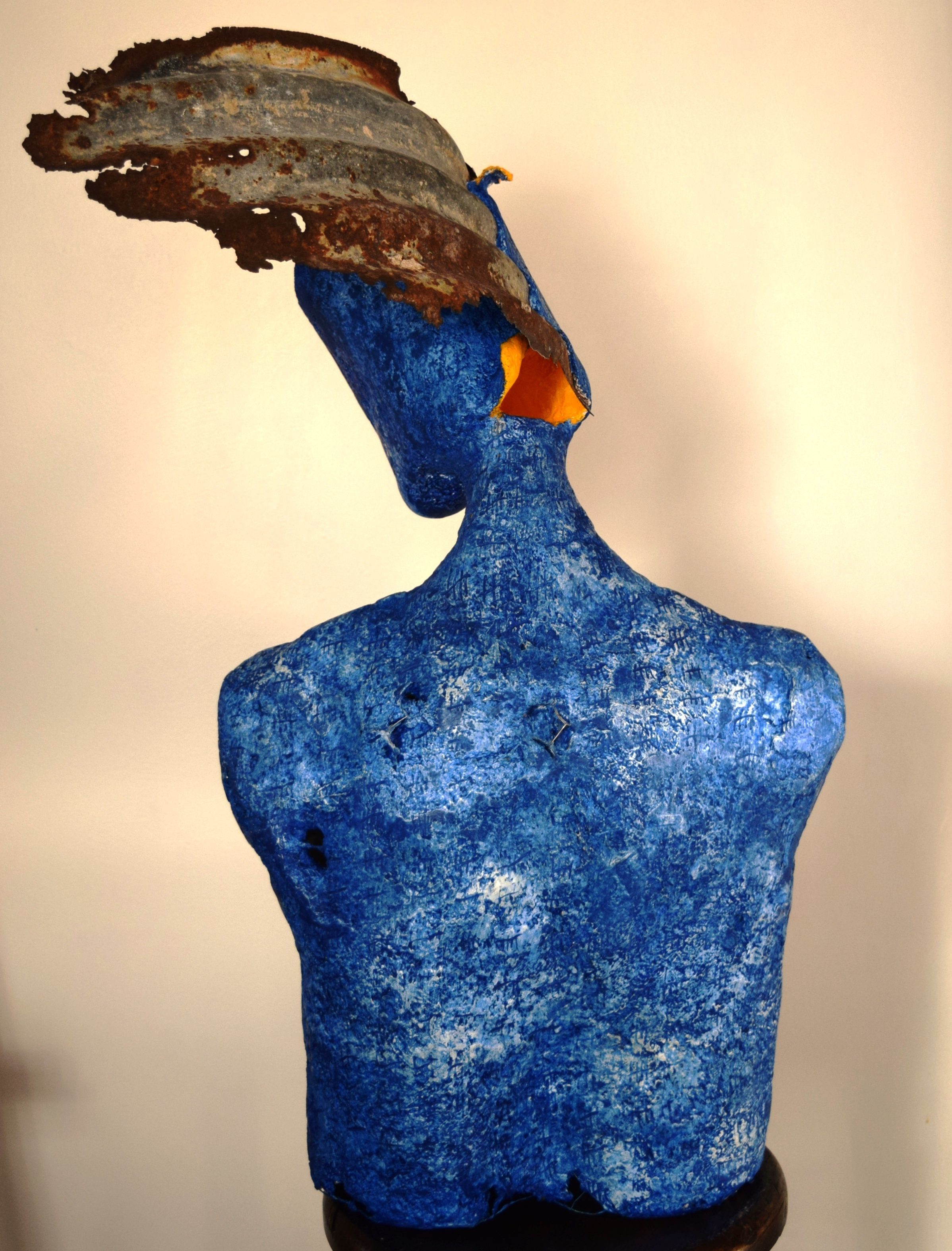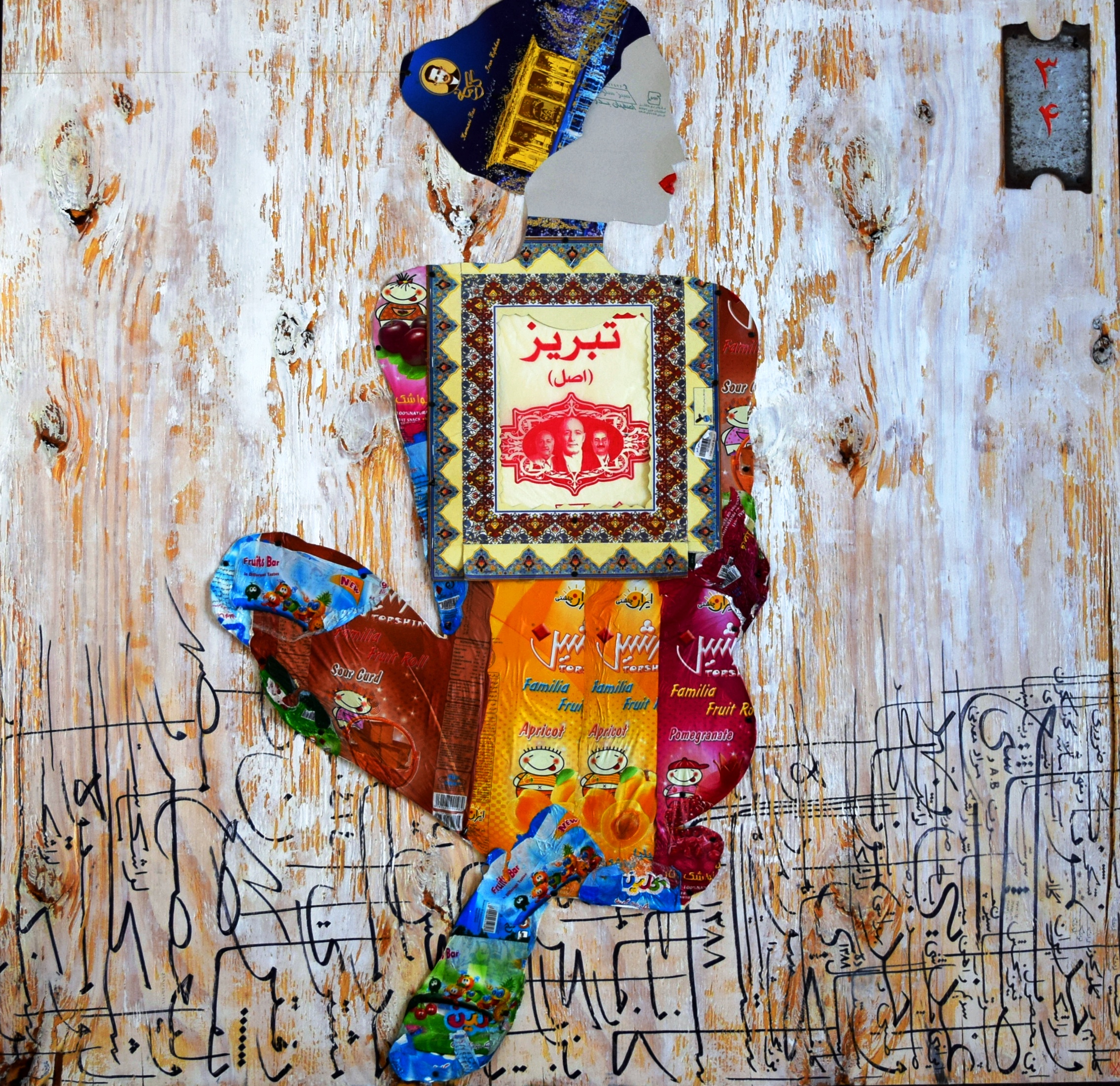
This is part of our special feature Governing the Migration Crisis.
The artists featured here have drawn from various cultures and identities all their lives: one born in France but equally rooted in Algeria, and one born in England but raised in Iran. Their identities as immigrants, living the “in between,” now play a major role in their works and community engagement. Jason Noushin’s art and titles draw from traditional cuisine and literature, while Attia’s projects focus on repair and the healing between Western and Non-Western societies. Both artists show that migration and immigration will produce new cultural riches and allow for the engagement of people to see beyond hollow faceless individuals and sinister, intrusive Foreigners. In doing so, they are providing opportunity to tackle stereotypes and prejudices and to turn the focus on the cultural capital of immigration and the ambition for a better life.
–Nicole Shea for EuropeNow
Kader Attia
With his work “Reason’s Oxymorons” that premiered at the Lyon Biennial 2015, Kader Attia created an expansive video library containing interviews with philosophers, ethnologists, historians, psychiatrists, psychoanalysts, musicologists, patients, healers, fetishists, and griots. Its volumes are edited following different themes like “Genocide,” “Totem and Fetish,” “Reason and Politics,” or “Trance.” Each individually and also as a whole they make up an essay on the psychiatric pathology as it is perceived in traditional Non-Western cultures, on the one hand, and in modern Western societies, on the other. In its mix of rational explanations and irrational representations of what the West calls psychiatry, the work is particularly concerned with the question of the unrepairable, inherent in the idea of “repair” and it calls into question the ambivalence of the psyche of modern Western societies towards traditional Non-Western societies. The projections from Attia’s library not only point to reason’s oxymorons but also to history’s oxymorons and the ambivalent nature of historical progress that can be regarded as a process of injury and repair leaving its traces in social psychopathology.

Ghost, 2007, Aluminium foil, Installation view “La route de le soie”, at Le Tripostal, Lille, 2010, Courtesy of the artist and Galerie Nagel Draxler, Photo: Maxime Dufour

Ghost, 2007, Aluminium foil, Installation view “La route de le soie”, at Le Tripostal, Lille, 2010, Courtesy of the artist and Galerie Nagel Draxler, Photo: Maxime Dufour

The view at Krinzinger Projekt – Vienna, in 2007, Photo: Angelika Krinzinger
Kader Attia (b. 1970, France), grew up in both Algeria and the suburbs of Paris, and uses this experience of living as a part of two cultures as a starting point to develop a dynamic practice that reflects on aesthetics and ethics of different cultures. He takes a poetic and symbolic approach to exploring the wide-ranging repercussions of Western modern cultural hegemony and colonialism on non-Western cultures, investigating identity politics of historical and colonial eras, from Tradition to Modernity, in the light of our globalized world, of which he creates a genealogy.
For several years, his research focuses on the concept of Repair, as a constant in Human Nature, of which the modern Western Mind and the traditional extra-Occidental Thought have always had an opposite vision. From Culture to Nature, from gender to architecture, from science to philosophy, any system of life is an infinite process of repair.
In 2016, Kader Attia founded La Colonie, a space in Paris to share ideas and to provide an agora for vivid discussion. Focussing on de-colonialization not only of peoples but also of knowledge, attitudes and practices, it aspires to de-compartmentalize knowledge by a trans-cultural, trans-disciplinary and trans-generational approach. Driven by the urgency of social andcultural reparations, it aims to reunite which has been shattered, or drift apart.
Recent exhibitions include The 57th Venice Biennial, “Sacrifice and Harmony,” a solo show at Museum Für Moderne Kunst, Francfort, “The Injuries are Here” a solo show at the Musée Cantonal des Beaux Arts de Lausanne, “Culture, Another Nature Repaired,” a solo show at the Middelheim Museum, Antwerp, ‘Contre Nature,’ a solo show at the Beirut Art Center, ‘Continuum of Repair: The Light of Jacob’s Ladder,’ a solo show at Whitechapel Gallery, London, ‘Repair. 5 Acts’, a solo show at KW Institute for Contemporary Art, Berlin, ‘Construire, Déconstruire, Reconstruire: Le Corps Utopique,’ a solo show at Musée d’Art Moderne de la Ville de Paris, the Biennale of Dakar, dOCUMENTA(13) in Kassel, ‘Performing Histories (1)’ at MoMA, New York, and ‘Contested Terrains,’ Tate Modern, London.
Kader was the recent recipient of the 2016 Prix Marcel Duchamp, France’s most prestigious art award.
Click here to view Exiles: Interviews by Kader Attia.
Jason Noushin
Until recently, I never considered myself an immigrant, but lately I’m reminded I’ve been one my entire life. A life lived on several continents with different languages, cultures and values – it’s impossible to think of any one place as home as there have been many.
Memories from these places play in my mind like a silent film on a loop – I try to capture some and make them tangible, perhaps permanent even. For instance, the painting, ‘1\194’ titled after my street number in Tehran, tells the story of a specific moment with my brother, Simon. The text on the body of the canvas reads: “When I was a child, I used to dig holes in the ground with my brother. We had been told by someone now lost to time, that EVIN was built under the city of Tehran. We wanted to reach them.” Evin of course, is the notorious prison north of Tehran where thousands of political prisoners were tortured and killed before and after the revolution. My aunt was incarcerated there for eleven months, a time she rarely talked about. As children we thought we could dig the ground and free the prisoners from the vast underground cavern. The prison is still there today.
Other work titles refer to food or English literature. Like Proust’s madeleine, the mere scent of Persian cuisine transports me to my grandmother’s kitchen. A time of pure joy where I was recruited to clean rice, or stem green beans.
‘LAVASHAK’ is a delicious Persian fruit roll and the entire work is made with lavashak wrappers. ‘SHOLEH-ZARD’ is a rice desert made with saffron, sugar, cinnamon and crushed pistachios. I haven’t tasted that in more than 30 years, a byproduct of migration. ‘BRIDE & GROOM LIE HIDDEN FOR THREE DAYS’ is a sculpture covered in Persian calligraphy, a transcription of a poem by Ted Hughs. English poetry and literature also play a part in my practice. They are a reminder of my place of birth, England, the land I first left at the age of three months.

BRIDE & GROOM LIE HIDDEN FOR 3 DAYS (2016) Encaustic and plaster on wire with ink, oil and shellac. Height: 36 inches 91.4 cm

1\194 (2017) Plaster, pencil, oil, steel, gold leaf, brass wire, grapevine, house paint, varnish, shellac and encaustic on linen. 74 x 46 inches. 188 x 117 cm

SHOLEH-ZARD (2016) Plaster, oil and corrugated metal on wire. 34 inches, 86.3 cm

LAVASHAK (2016) Oil, ink, paper and candy wrappers with tacks, brass wire and metal plate on wood panel. 46 x 47 inches. 117 x 119 cm

LPSII (2017) Oil, pencil, gold lining, shellac and comic book leaves on panel. 48 x 48 inches. 122 x 122 cm
Jason Noushin was born in 1969 in Plymouth, England. He spent his youth living in Tehran and moved to Paris, then London after the Iranian Revolution and subsequent war with Iraq. Today he lives and works in Connecticut. Primarily self-taught, he is equally a draftsman, painter and sculptor working with a wide variety of traditional and nontraditional materials which at times blur the line between disciplines. An antiquarian book collector and dealer, he incorporates old sheets of paper, bindings and manuscripts in his work, especially as a platform for his large pen and ink drawings. According to Noushin, these sheets are “alive with traces of humanity,” such as fingerprints and markings of previous owners long gone. The typography compliments Noushin’s Persian calligraphy which is present through much of his recent output. He stretches and prepares his own linen canvases and is meticulous about the materials he uses for support.
Noushin has exhibited internationally, including gallery shows throughout the United States, London, the United Arab Emirates, Monaco and Tehran and featured widely in the press including Wall Street International, Harper’s Bazaar Arabia and Huffington Post. He was awarded a solo exhibition in 2010 at The Hammond Museum in Westchester, New York by David McFadden, Chief Curator of The Museum of Arts and Design, NYC. Noushin was selected for the 2016 biennial at the deCordova Museum in Massachusetts to represent Connecticut. His work can be found in numerous private collections in the United States and abroad.
Nicole Shea ran CenterArts Gallery in Newburgh from 2009-2012 and later incorporated her arts experience into the leadership training at West Point. In 2015, she founded a large-scale sculpture walk outside the gates of West Point, which she has been curating together with the founding members of Collaborative Concepts in a community effort to revitalize the area via the arts. She is also Executive Editor of EuropeNow and Director of the Council for European Studies.
Published on October 2, 2017.




